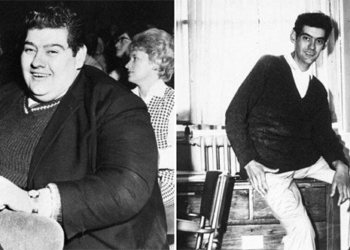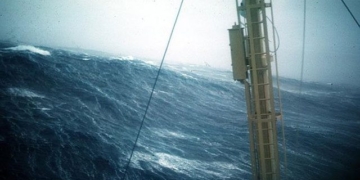The giant “elevator” that lifts and lowers boats using a unique rotational method in Scotland is called the Falkirk Wheel, which cost £84.5 million.
The structure is named after the surrounding area of Falkirk in Central Scotland. On May 24, 2002, Queen Elizabeth II inaugurated the Falkirk Wheel as part of the celebration for her wedding anniversary, although it was delayed by about a month due to flooding. The total cost for repairs caused by the flood damage was £350,000.
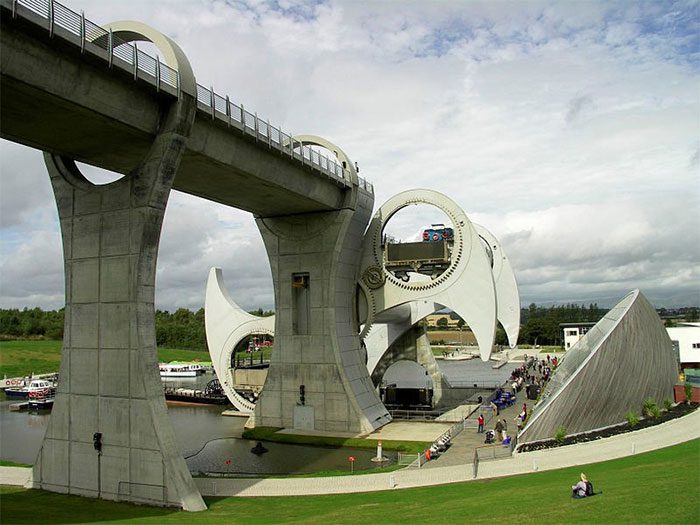
This “artificial wonder” was designed and constructed to connect the Forth and Clyde area with the Union Canal. Due to a water level difference of up to 24 meters between the two canals, nearly equivalent to an 8-story building, navigation was very challenging, making the construction of a connecting canal impossible. Boats from the lower water level Clyde Canal enter a trough, which then raises them into a water aqueduct so they can flow into the upper Union Canal.
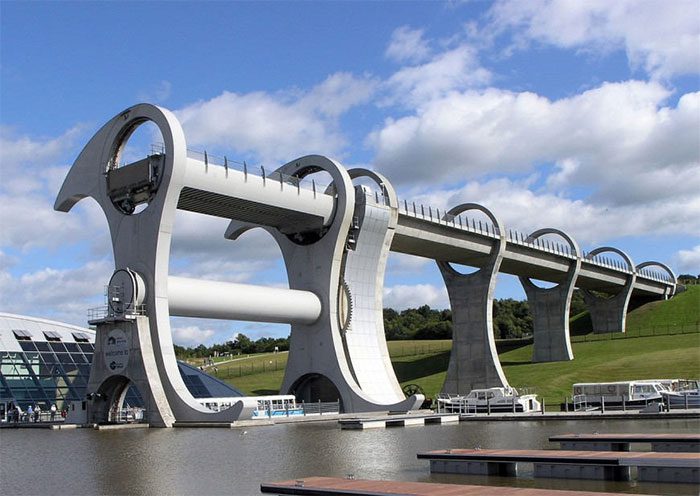
This elevator is the first and only rotating bridge in the world. The Falkirk Wheel features a large gear with a diameter of 35 meters, consisting of two symmetrical arms extending 15 meters beyond the central axis. The design of the two ends of the bridge is inspired by a Celtic axe.
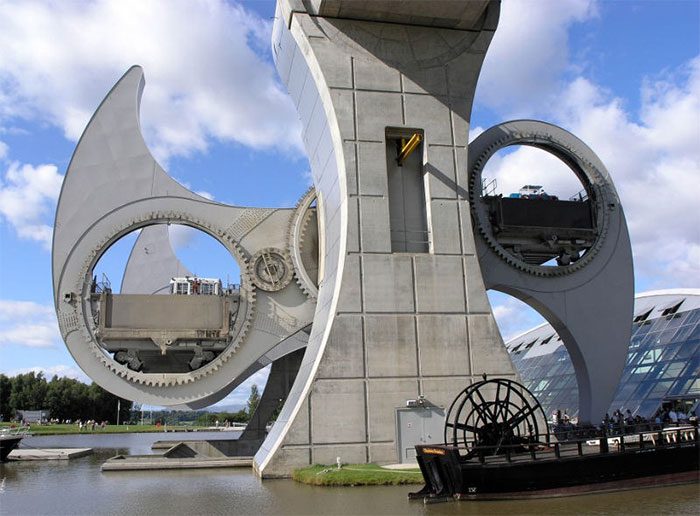
The giant wheel of this bridge can rotate 180° in 5.5 minutes, consuming very little electricity—only about 1.5 kW/h (5.4 MJ) to operate, equivalent to the energy needed to boil around 8 small kettles. Once operational, the Falkirk Wheel has proven its effectiveness by creating a genuine link between the two canals while also becoming an extremely popular tourist attraction due to its unique design.

Since 2007, the Falkirk Wheel boat lift has been featured on the £50 banknote issued by the Bank of Scotland. There is now a dedicated tour to visit this unique “elevator” which lasts about an hour.









































